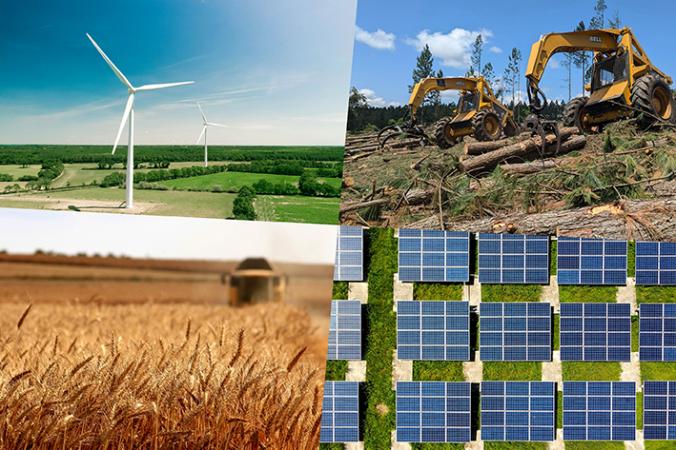Satellites to keep an eye on polluters
A nonprofit artificial intelligence firm called WattTime is planning to use satellite imagery to precisely track the air pollution (including carbon emissions) coming out of every single power plant in the world, in real time.
Oakland-based WattTime announced on May 7, 2019, a new project, funded by Google.org, which will use a global network of satellites to measure carbon emissions from all large power plants worldwide. The data will be made public.
WattTime and a group of other collaborating environmental nonprofits chosen through the Google AI Impact Challenge aim to use the resulting data both to hold polluting plants accountable to environmental standards, as well as to enable advanced new emissions reduction technologies.
WattTime previously pioneered solutions such as Automated Emissions Reduction (AER), which leverages past, present, and forecasted power grid emissions data and machine learning algorithms to allow smart devices to adjust the timing of their energy use to sync with clean energy and avoid dirty energy. The organization is spearheading this new endeavor to develop a global continuous emissions monitoring system that is more granular, accurate, and comprehensive than anything that has existed before.
- We received thousands of applications to the Google AI Impact Challenge and are excited to be supporting WattTime with funding and expertise from Google, said Jacquelline Fuller, president of Google.org.
- AI is at a nascent stage when it comes to the value it can have for the social impact sector, and we look forward to seeing the outcomes of this work and considering where there is potential for us to do even more.
Joining WattTime in the collaboration are nonprofits Carbon Tracker, a financial think tank that analyzes the economic impacts of the energy transition and the first organization to pioneer satellite-based power plant monitoring; and World Resources Institute (WRI), a global research organization working to secure a more sustainable future and who maintains the most comprehensive Global Database of Power Plants in existence today.
The upcoming project will work by leveraging the growing global satellite network to observe power plants from space. AI technology will use the latest image processing algorithms to detect signs of power plant emissions. For maximum accuracy, the project will combine data from a variety of different sensors operating at different wavelengths. AI algorithms will cross-validate multiple indicators of power plant emissions, from thermal infrared indicating heat near smokestacks and cooling water intake to visual spectrum recognition that a power plant is emitting smoke.
- Far too many power companies worldwide currently shroud their pollution in secrecy. But through the growing power of AI, our little coalition of nonprofits is about to lift that veil all over the world, all at once, said Gavin McCormick, executive director of WattTime.
- To think that today a little team like ours can use emerging AI remote sensing techniques to hold every powerful polluter worldwide accountable is pretty incredible. But what I really love about better data is how it puts most companies, governments, and environmentalists on the same side. We’ve been thrilled to see how many responsible, forward-thinking groups have started using advanced data to voluntarily slash emissions without anyone making them.
Fossil fuel emissions are the largest single driver of climate change, and also lead to millions of deaths each year from air pollution exposure. Although a few wealthy countries today currently track emissions from some power plants using expensive continuous emissions monitoring systems, the vast majority of power plants worldwide are not continuously tracked, complicating environmental regulation and making advanced pollution control techniques impossible. With millions of tons of pollution likely going unreported, WattTime and its partners plan to jointly enable a variety of different emissions reductions techniques in a single project, and their satellite-provided 'eyes in the sky’ will ensure that power plant emissions have nowhere to hide.
More transparency for energy consumers
Accurate global emissions data has the ability to inspire everything from local environmental activism to new and effective environmental policy, to verification that countries are achieving national-level emissions targets such as Paris Accord commitments. In their ongoing work, WattTime also plans to use the information to further enable and refine software that can give billions of Internet-connected devices emissions reduction capabilities.
With work well underway, WattTime has already collected a significant amount of data, confirmed the feasibility of the methodologies, and developed a network of users who could apply the emissions data for greater impact.
- The more transparency we can provide for energy consumers around the world, the more likely we are to solve some of the monumental challenges facing our planet, said Johannes Friedrich, a senior associate at WRI.
- We believe this project will help bring the world one huge step closer to meeting urgent carbon reduction goals, and we’re proud to be a part of it.
Nina Garlo-Melkas






![EMR_AMS-Asset-Monitor-banner_300x600_MW[62]OCT EMR_AMS-Asset-Monitor-banner_300x600_MW[62]OCT](/var/ezwebin_site/storage/images/media/images/emr_ams-asset-monitor-banner_300x600_mw-62-oct/79406-1-eng-GB/EMR_AMS-Asset-Monitor-banner_300x600_MW-62-OCT.png)



